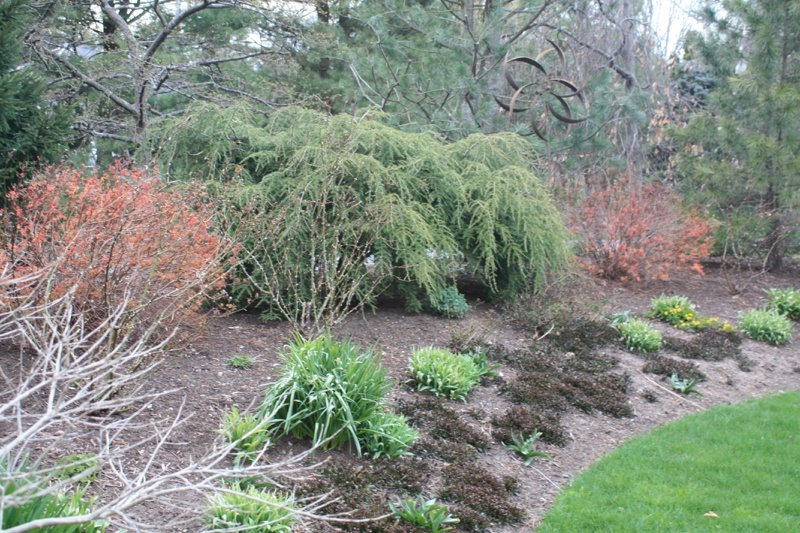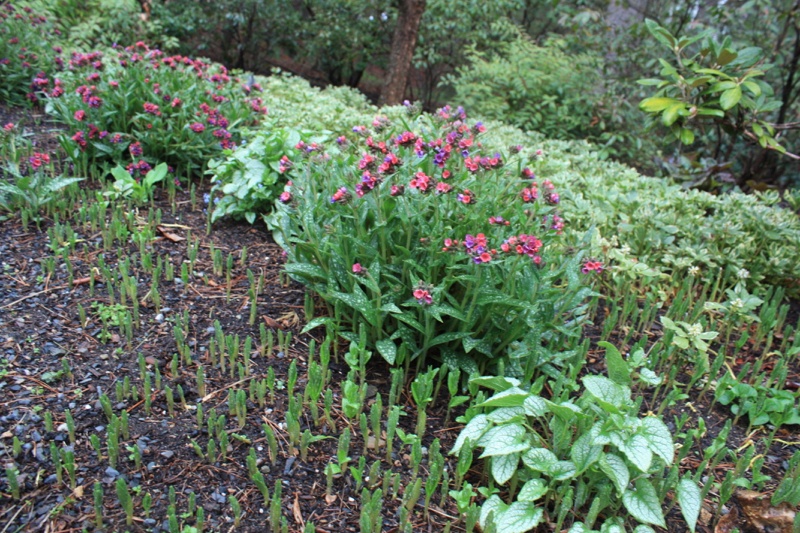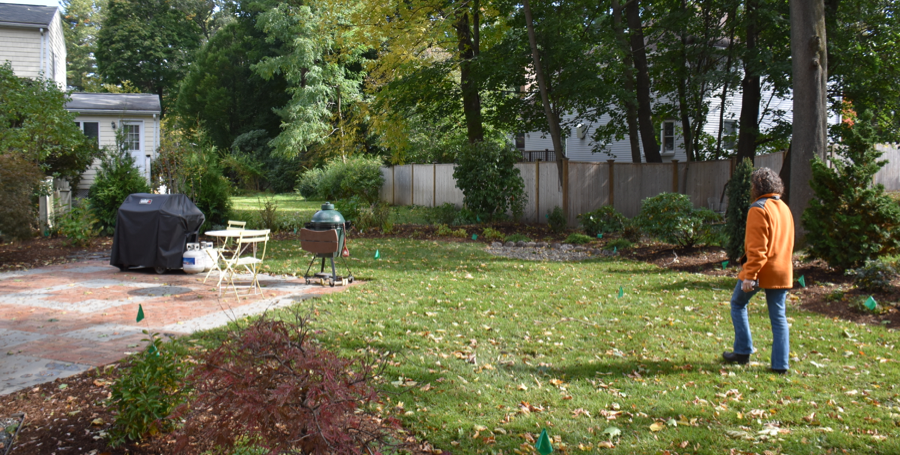Every landscape – both natural or managed – is dynamic. Nothing is frozen in time. Without proper, ongoing care, all built landscapes and managed environments will experience a slow and steady degeneration until the only remedy is complete renovation. Even with care the maturing and aged landscape of 15 plus years can start to outpace the space.
What’s needed to avoid major landscape surgery is periodic, year-round assessment that enables you to see and gage your landscape’s performance and determine what needs focused, more proactive attention and what can coast along with minimal care. Take notes and photographs to refer back to later in the year. Use them to review progress at each new phase and season and to act as a baseline for change. Keep in mind, that you can only put off care and change for so long. If you see an issue, address it as soon as you can.

Early season assessment lets you see where there is opportunity to move plants around. Like the Ajuga 'Chocolate Chip" could use a little dividing and shifting to fill in bare spots.
The key is three seasonal assessments that can help you understand what’s happening as your landscape comes back to life in the spring, actively grows and matures in the summer, and prepares to slumber in the fall and winter:
Early Spring (March/April) This is the critical first assessment of the new season, before plants are actively growing. Early spring is ideal for assessing hardscape features such as bed and lawn lines because the lack of foliage enables you to clearly see the structure of your landscape. Use this time to stage structural work that can be done later in the spring and summer. Remember to take notes that you can return to during your mid- and late-season assessments.
Mid-Summer (July/August) By this time your lawn and gardens are in full swing. Plants are at the height of their growth and everything has filled in so you can clearly see any areas that have become crowded and ones experiencing significant gaps that need to be addressed. The earlier this assessment is done, the more ability you have to schedule both summer and fall work such as pruning, dividing, transplanting and adding plants.
Mid-Fall (October/November) The season is waning and plants are getting ready for their long winter’s slumber. This is when you can assess the failures of the year so you can plan corrections that can happen in the winter – such as tree removals and corrective pruning -- as well as late and early season hardscape repairs. Spring will be here before you know it, so now’s the perfect time to start planning for early spring work that will enable you to get a jump on the new season.
When you’re actively assessing your landscape throughout the year, you’re able to provide thoughtful, ongoing management that respects your original design intent while enabling you to take advantage of opportunities to make progressive improvements and adjustments. You’re better able to gently steer your landscape more effectively in a direction that reflects your vision, instead of being forced to react more aggressively because you allowed minor failures to pile up over time, ultimately requiring significant renovation work.
A key point here is that landscapes do take more than just maintenance. Even with good maintenance, the pace of growth, and sometimes the sizes achieved, or the increasing shade and root pressure of surrounding woodlands will require that you change your landscape. Don’t fight that too long. Be willing to invest in changes - what I call edits - that will address the environmental changes and maturing and aging process. This will ensure you have a landscape with longevity.

Another opportunity to do some dividing to alleviate plant crowding. This Polygonatum humile is a great groundcover but after 5 years in the bed it's starting to grow into the Pulmonaria "Raspberry Splash", so it's time to pull some out.
The evolving landscape.
My own landscape is entering its 21st season. My husband and I designed, installed, and renovated it in stages over this period of time. We assess the landscape three times a year and keep a notebook of our findings. In that book we list areas we’d like to rethink and renovate in the future, the areas that will need consistent care during the year, and the areas that need only gentle tending. This has worked well for our property.
The properties that I manage professionally that do the best are the ones for which clients have handed over the assessments to us and follow our lead when we give them the list of to-dos. Of course, not everything we suggest is always done, but there is a good ongoing dialogue about property needs that enables each client to make his or her decisions – good and bad – based on the insights we provide. And of course, there are the clients who just leave it all to us and I’m happy to say those properties fare well.
Where we have the most trouble is when we provide only intermittent care, usually because of budgetary constraints, and the client is leaning on a mowing company to tend the landscape in between. What I’ve found is that these properties become incrementally harder to manage. They essentially “get away” from us until the only solution is renovation.

TWEETABLE TIP
Avoid major renovations by periodically assessing your landscape over the growing season with an eye for spotting opportunities for small changes that will extend your landscape’s life.
VIA @GardenContinuum

Someone - the owner or a care provider - should be doing functional landscape assessments more than once a year and making recommendations for actions over and above mulching and mowing, pruning and weeding. Regular, periodic tweaks will keep the landscape in optimal condition and functionally balanced. That can be as simple as removing a tree that is overly shading a garden. It can be as complicated as removing a whole section of a garden and starting over.
So now is the time. Get out there with a notebook and a camera. Make notes, take pictures, ask your landscape professional some questions about what they see. Come up with first steps, do those, then come back in mid-summer and then again in the fall and assess again. Nature is constantly evolving and so should your landscape.









Leave a comment